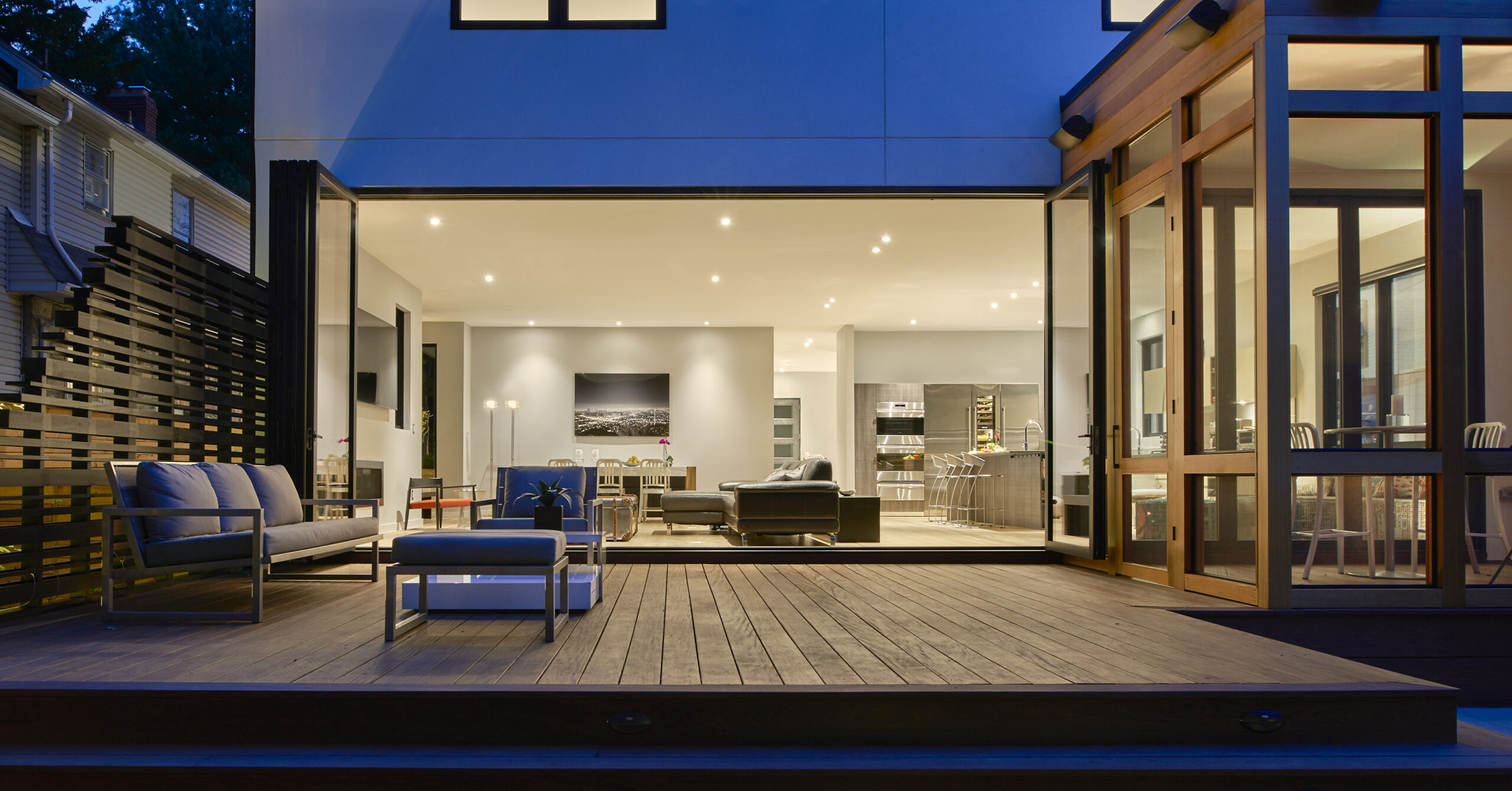The latest edition of “Architizer: The World’s Best Architecture” — a stunning, hardbound book celebrating the most inspiring contemporary architecture from around the globe — is now shipping! Secure your copy today.
Planning a trip to China? Make sure Chengdu is on your itinerary! As the capital of Sichuan Province, Chengdu is one of those cities that offers something for everyone. Known for its spicy cuisine and adorable giant pandas, Chengdu is also emerging as one of China’s top architecture and design hubs.
Situated in the fertile Sichuan Basin and surrounded by mountains and rivers, Chengdu has long been an agricultural heartland. With a population of over 16 million, it’s a lively metropolis where cultural heritage and modern design intertwine. The city features stunning projects, from museums and expo centers to creatively designed restaurants and community spaces. It’s no wonder it has been a common location for A+Award-winning projects in recent years.
From modern cultural landmarks to scenic parks, Chengdu has a lot to offer for design lovers and enthusiasts. With that in mind, we’re sharing 15 projects in (and around) the city that will convince you to include it on your travel list.
Longmenshan Town · Woyun Platform
By Archermit, Chengdu, China
Jury Winner, 11th Annual A+Awards, Cultural & Expo Centers
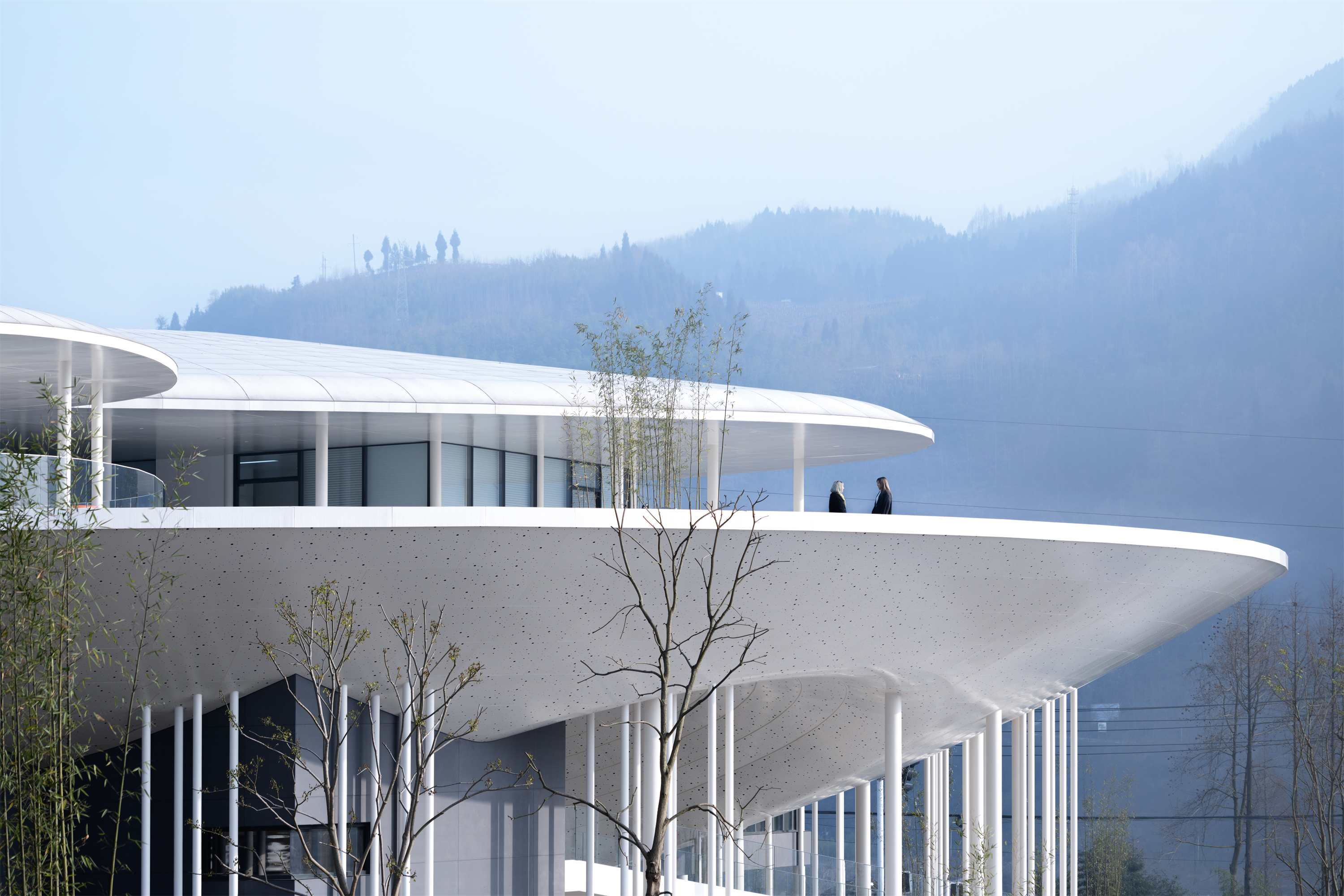
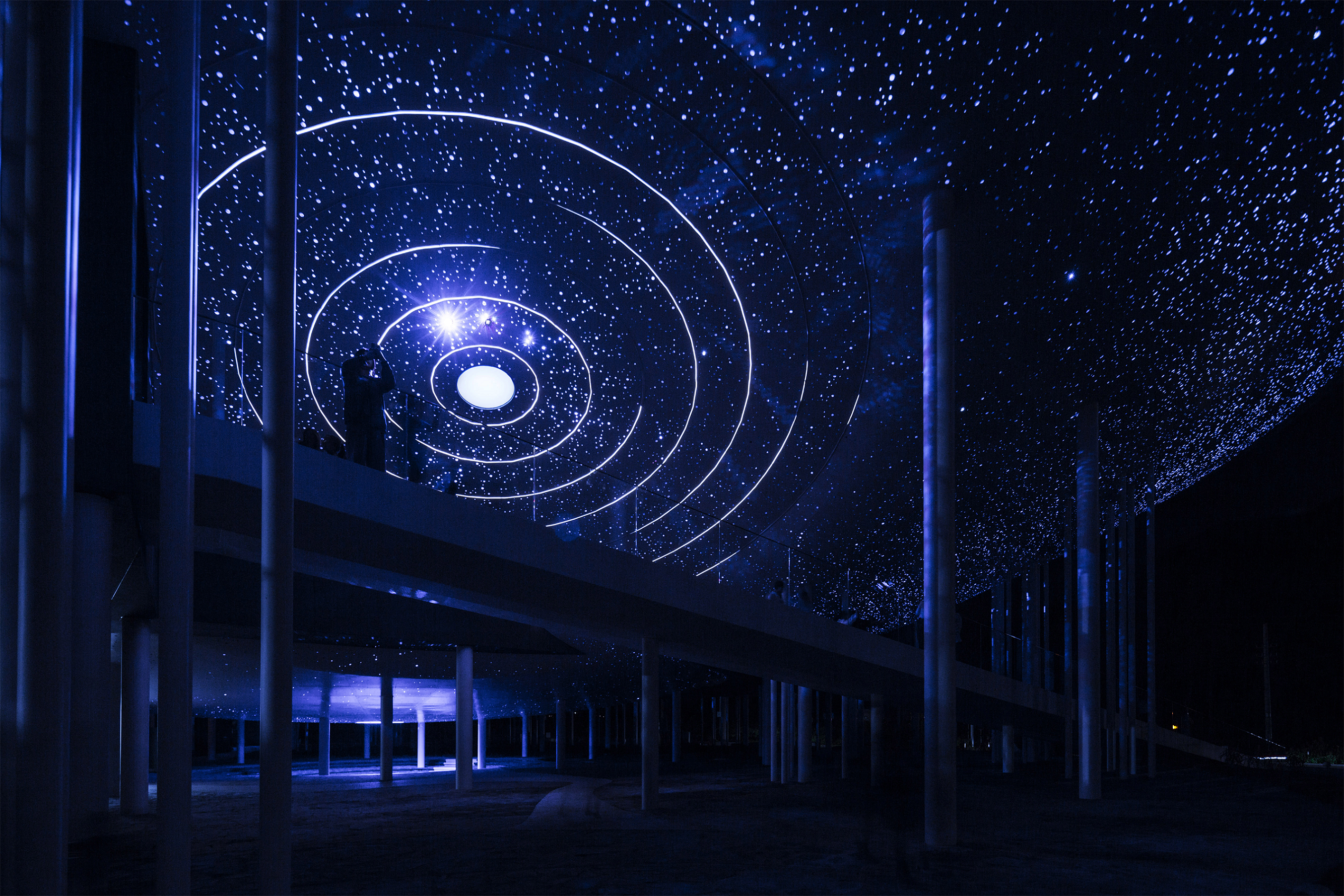
This building serves as the gateway to the National Giant Panda Forest Park and incorporates elements like bamboo forests, clouds and local geological features. The elevated “white bamboo forest” functions as an open meeting space for the surrounding villages, with a dome that transforms into a starry universe at night.
The Panda Pavilions
By Atelier Ping Jiang | EID Arch, Chengdu, China
Jury Winner, 12th Annual A+Awards, Sustainable Cultural Building
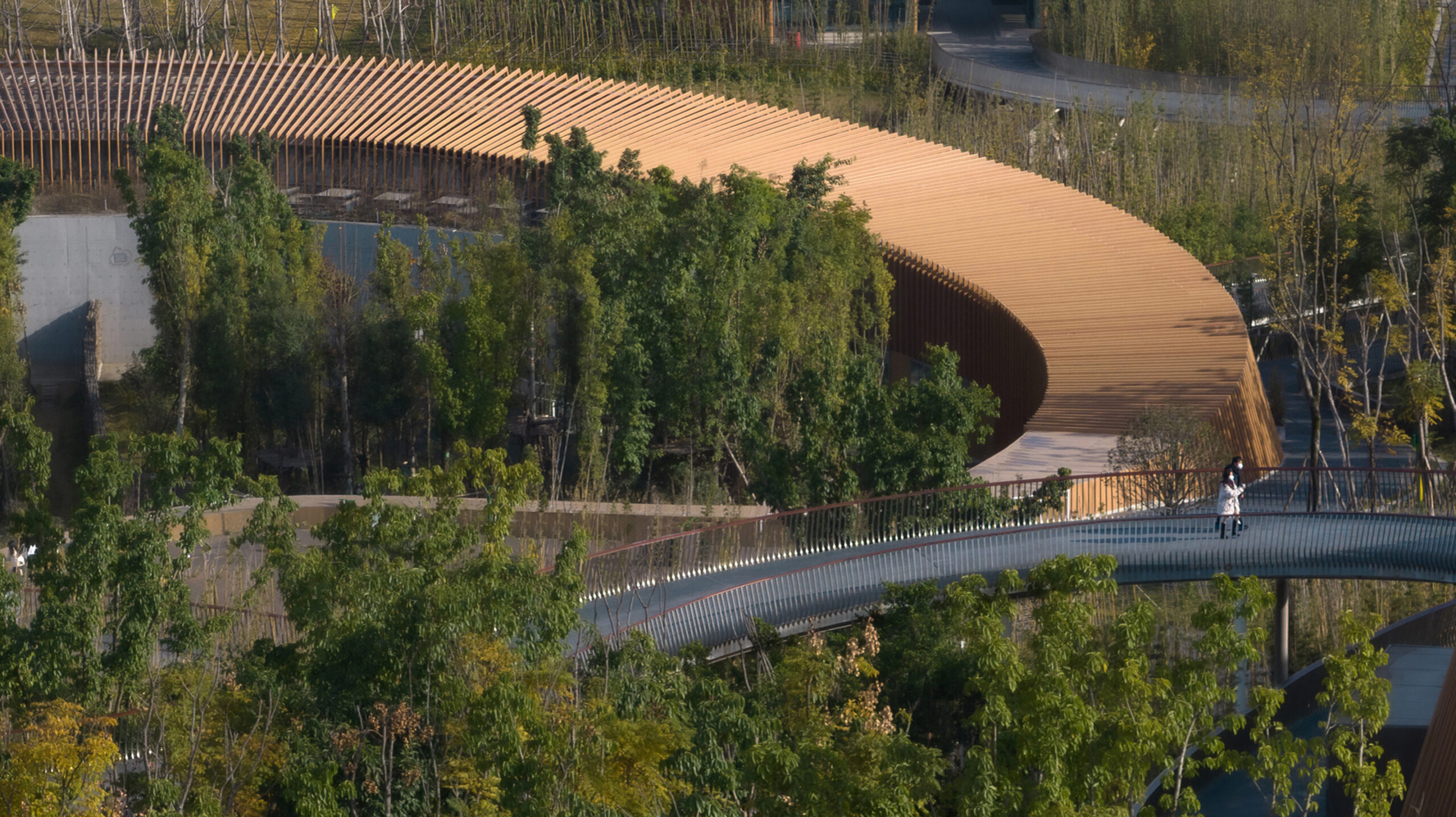
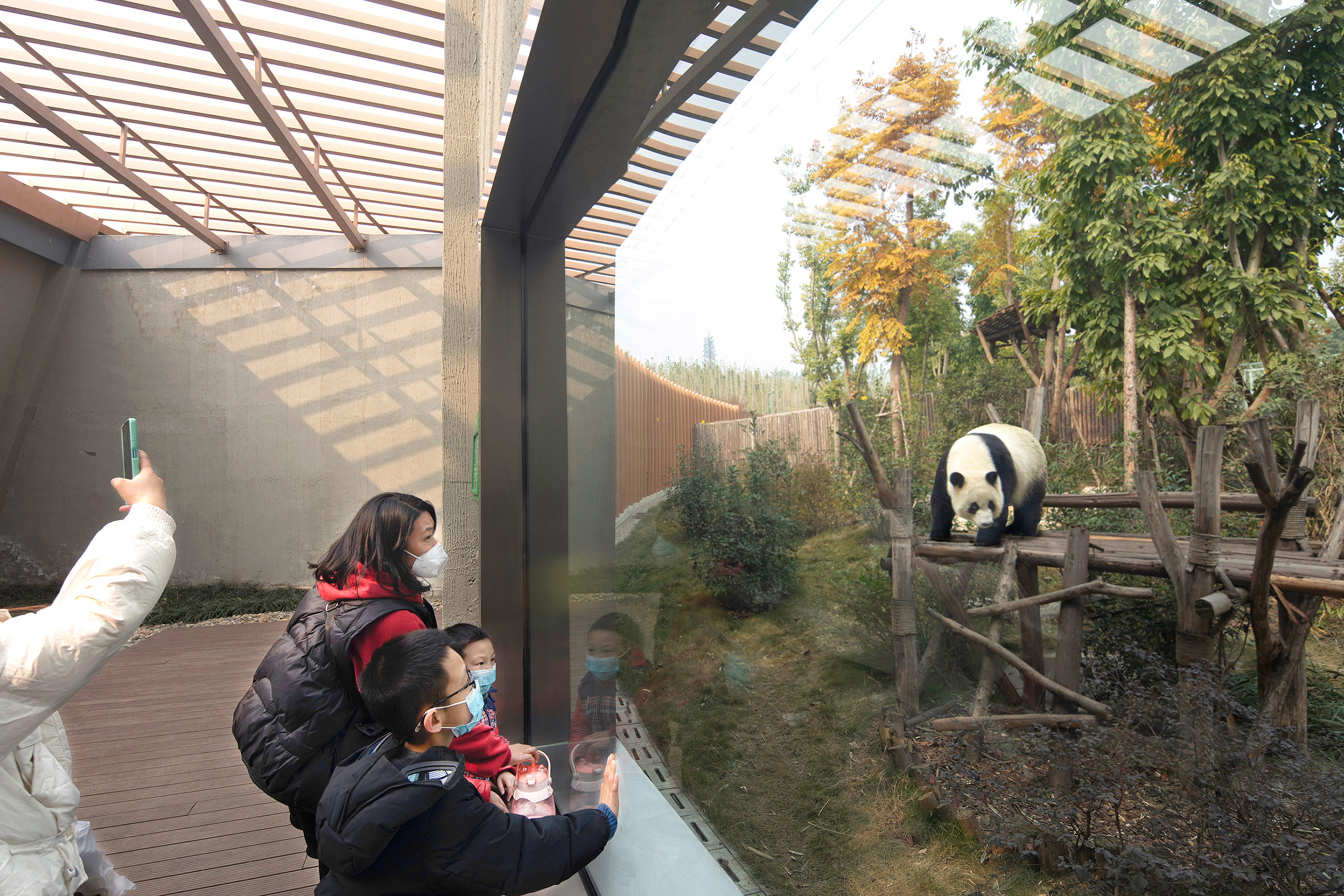 Chengdu is the home of the beloved giant panda and the National Giant Panda Research and Breeding Center. Showcasing their commitment to preservation, the latest expansion of the center includes four new panda pavilions designed to feel like they are part of the natural landscape. These pavilions feature open-air circular courtyards that serve as outdoor playgrounds for the pandas, while visitors can observe and learn about their behavior without disturbing the animals.
Chengdu is the home of the beloved giant panda and the National Giant Panda Research and Breeding Center. Showcasing their commitment to preservation, the latest expansion of the center includes four new panda pavilions designed to feel like they are part of the natural landscape. These pavilions feature open-air circular courtyards that serve as outdoor playgrounds for the pandas, while visitors can observe and learn about their behavior without disturbing the animals.
Chengdu Museum of Contemporary Art, Tianfu Library of Humanity and Art
By CSWADI, Chengdu, China
Jury Winner, 12th Annual A+Awards, Libraries
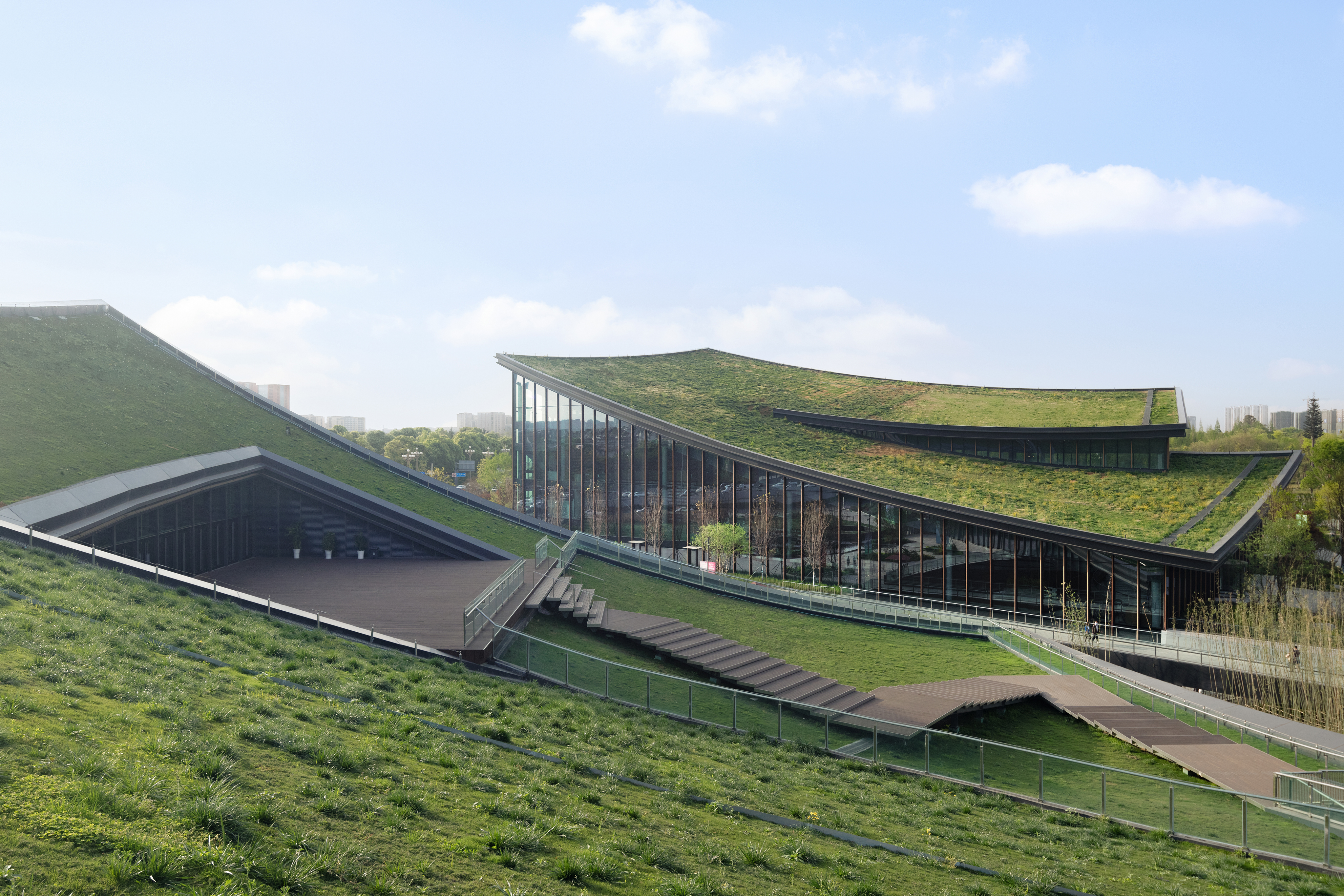
 Tianfu Art Park in Chengdu features the Chengdu Museum of Contemporary Art and the Tianfu Library of Humanity and Art. The park’s stunning curved roofs mimic the nearby mountains, creating a breathtaking skyline.
Tianfu Art Park in Chengdu features the Chengdu Museum of Contemporary Art and the Tianfu Library of Humanity and Art. The park’s stunning curved roofs mimic the nearby mountains, creating a breathtaking skyline.
The Chengdu Museum, with its expansive glass walls and skylights, aims to blend art with nature, offering engaging contemporary exhibitions.
Meanwhile, the terraced Tianfu Library, known as “Book Mountain,” uses reading platforms and book walls to create a dynamic space for exploration.
Minjiang Village Courier Station
By MUDA-Architects, Chengdu, China
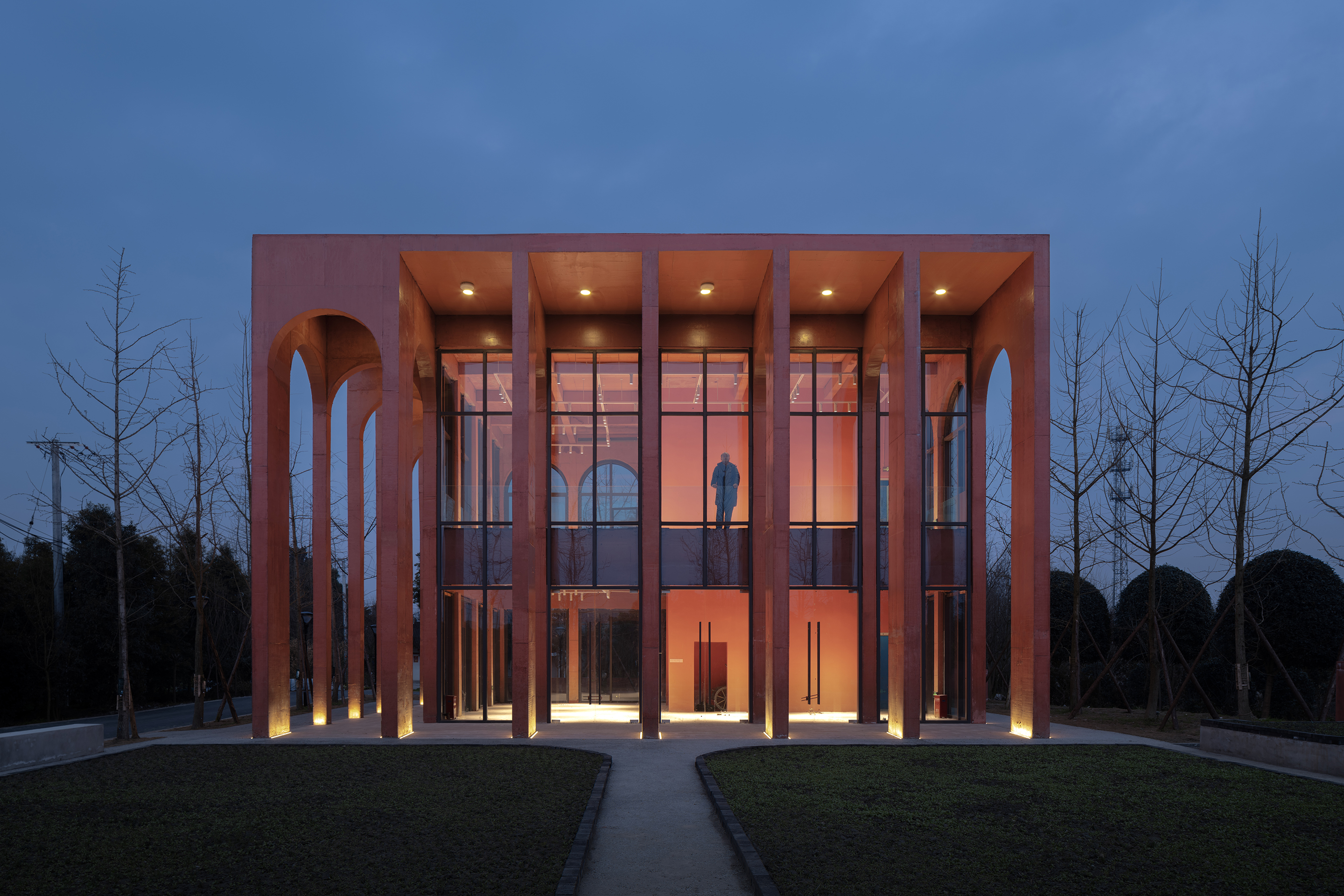
 Drawing inspiration from traditional Sichuan verandas, the design of this courier station (that serves both tourists and locals) reinterprets it with contemporary aesthetics. The building features a double-height semi-enclosed area, providing ample natural light and a multifunctional space for social interaction. This project is a key part of the rural revitalization effort, creating a flexible and inviting communal area.
Drawing inspiration from traditional Sichuan verandas, the design of this courier station (that serves both tourists and locals) reinterprets it with contemporary aesthetics. The building features a double-height semi-enclosed area, providing ample natural light and a multifunctional space for social interaction. This project is a key part of the rural revitalization effort, creating a flexible and inviting communal area.
Danjing Pavilion of Longquan Mountain Urban Forest Park
By Chengdu Architectural Design and Research Institute, Chengdu, China
 This pavilion spans a historical site of over 2300 years and offers a prime vantage point overlooking the Eastern New Urban District and Three Forks Lake. Inspired by bamboo culture, the design incorporates elements of bamboo shoot towers, reinterpreting traditional Chinese pavilions with inclined supports that resemble bamboo shoots. The structure uses locally sourced materials, including high-performance bamboo-based fiber composite, promoting local employment and sustainable building practices.
This pavilion spans a historical site of over 2300 years and offers a prime vantage point overlooking the Eastern New Urban District and Three Forks Lake. Inspired by bamboo culture, the design incorporates elements of bamboo shoot towers, reinterpreting traditional Chinese pavilions with inclined supports that resemble bamboo shoots. The structure uses locally sourced materials, including high-performance bamboo-based fiber composite, promoting local employment and sustainable building practices.
Chengdu Museum of Natural History
By Pelli Clarke & Partners, Chengdu, China
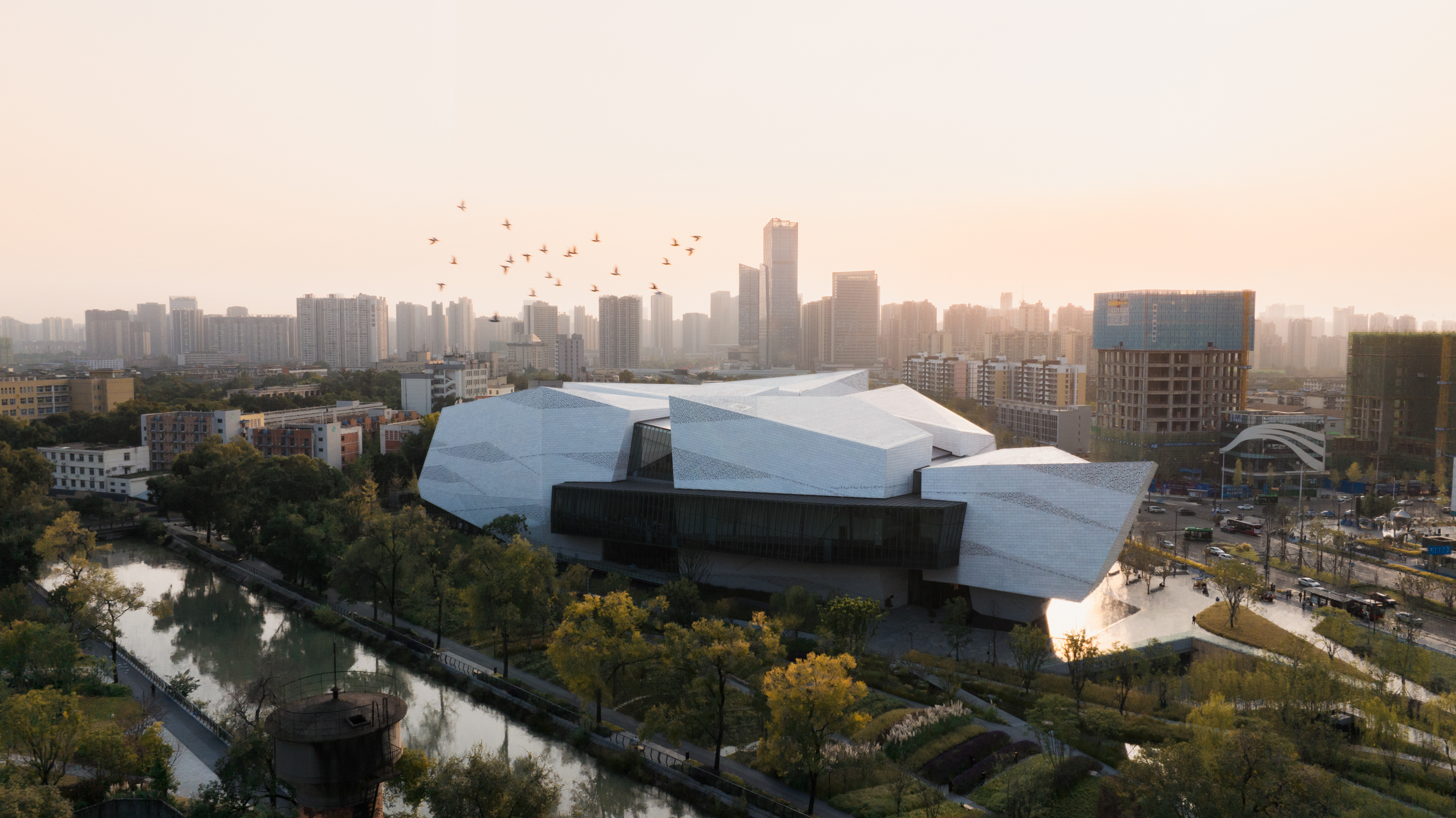
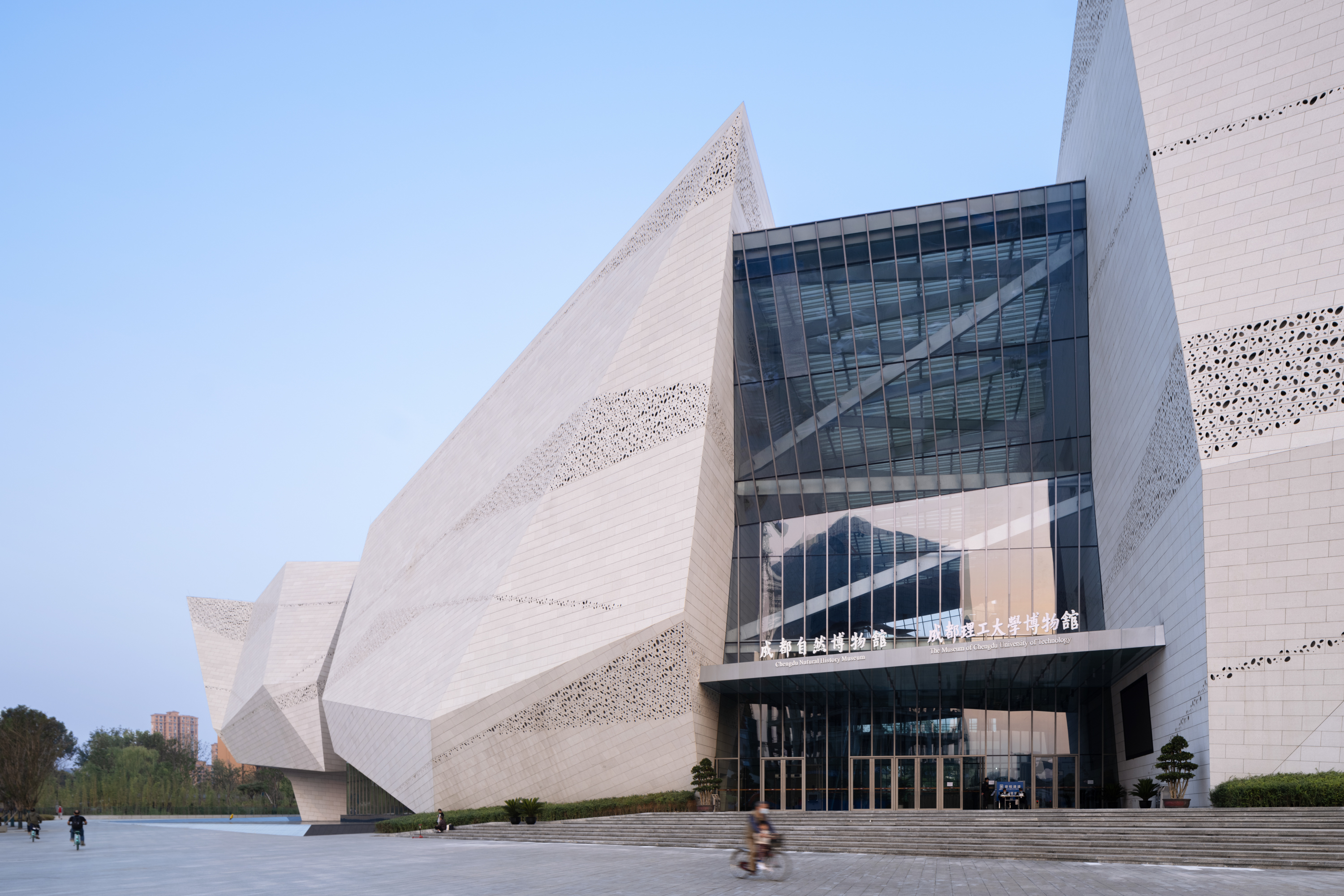 This 538,195-square-foot (50,000-square-meter) museum celebrates Chengdu’s modern ethos and historical legacy with expansive exhibits, public spaces and educational facilities. The design reflects the region’s geological history with dramatic forms that mimic volcanic activity and tectonic shifts. The exterior granite surface features organic perforations, creating a striking visual effect that resembles daylight on mountain snow. Inside, sculpted wooden bridges evoke Chengdu’s ancient water passages, while outside, indigenous plants and waterways create an immersive natural experience.
This 538,195-square-foot (50,000-square-meter) museum celebrates Chengdu’s modern ethos and historical legacy with expansive exhibits, public spaces and educational facilities. The design reflects the region’s geological history with dramatic forms that mimic volcanic activity and tectonic shifts. The exterior granite surface features organic perforations, creating a striking visual effect that resembles daylight on mountain snow. Inside, sculpted wooden bridges evoke Chengdu’s ancient water passages, while outside, indigenous plants and waterways create an immersive natural experience.
Garden Hotpot Restaurant
By MUDA-Architects, Chengdu, China
Jury Winner, 8th Annual A+Awards, Restaurants

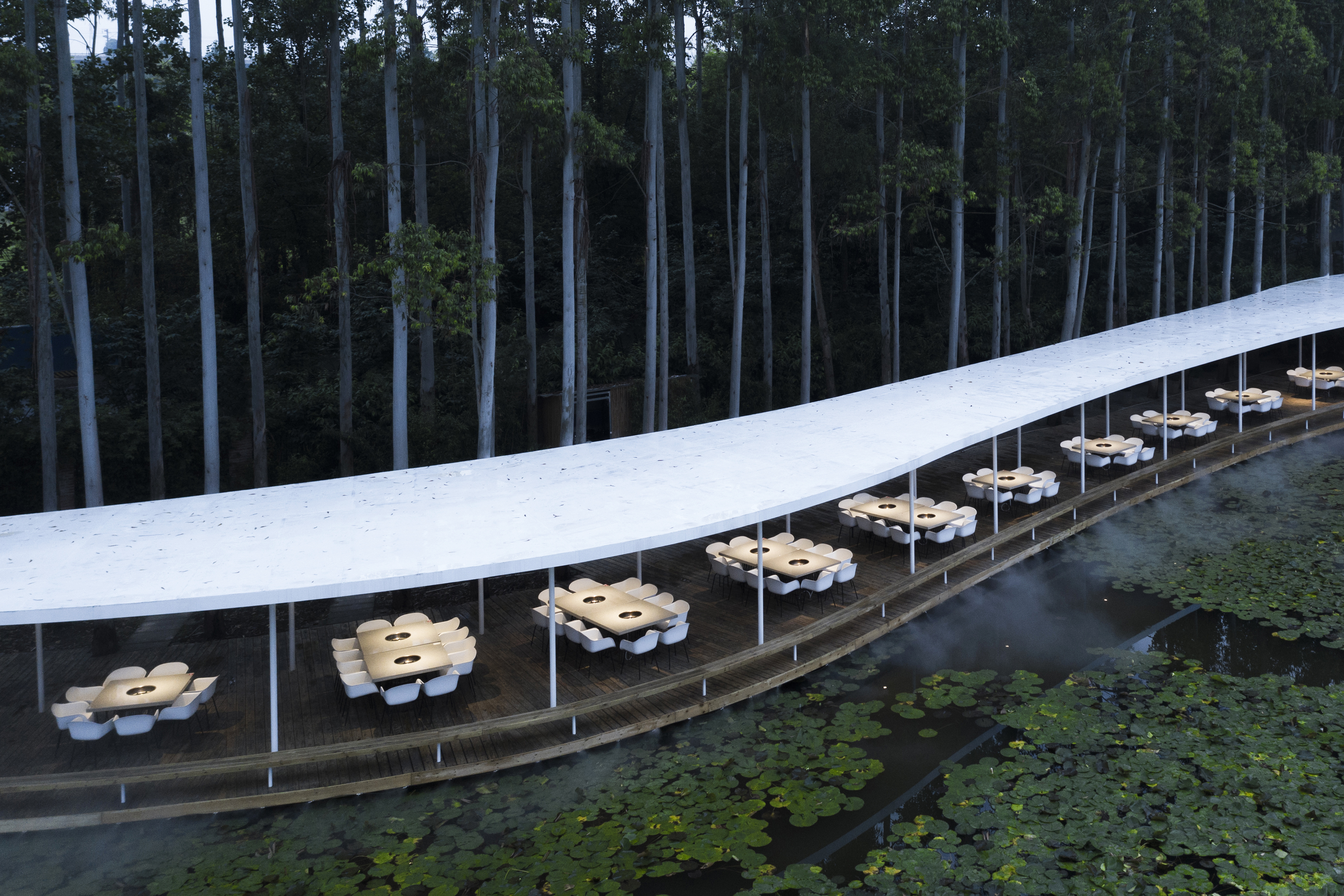 Tucked away in Chengdu’s “green lung,” this unique restaurant offers visitors the perfect spot to enjoy good food and great design. Inspired by the organic shapes of the eucalyptus forest and nearby lotus pond, the restaurant eliminates traditional walls, using pillars and open platforms to immerse diners in nature. The free-flowing roof curves and tree-integrated structure evoke the steam and smoke from boiling hotpots, strengthening the connection between the dining experience and the natural environment.
Tucked away in Chengdu’s “green lung,” this unique restaurant offers visitors the perfect spot to enjoy good food and great design. Inspired by the organic shapes of the eucalyptus forest and nearby lotus pond, the restaurant eliminates traditional walls, using pillars and open platforms to immerse diners in nature. The free-flowing roof curves and tree-integrated structure evoke the steam and smoke from boiling hotpots, strengthening the connection between the dining experience and the natural environment.
Qionglai Bamboo Pavilion
By UNO Architects, Qionglai City, Chengdu, China
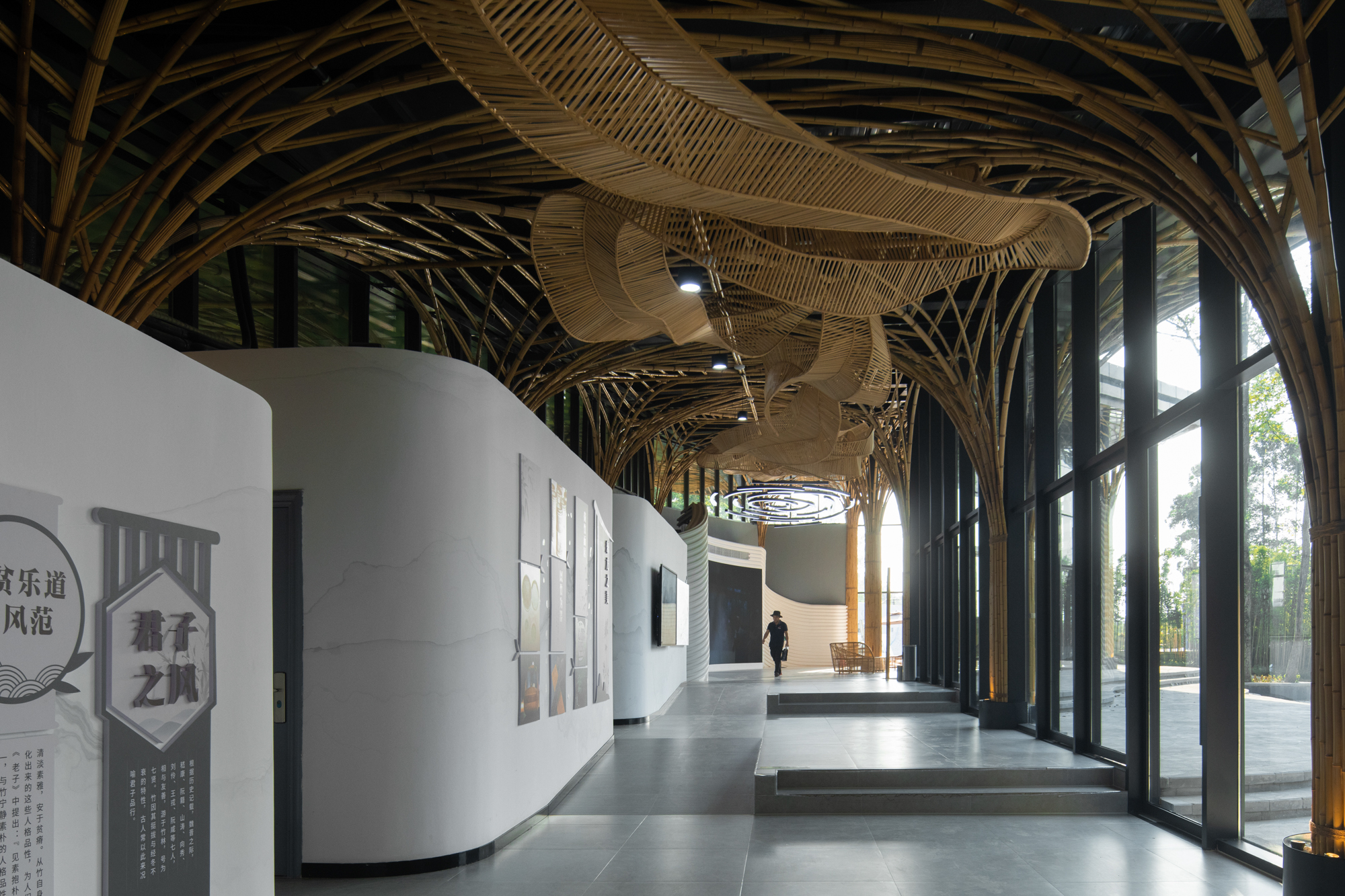
Chengdu Science Fiction Museum
By Zaha Hadid Architects, Chengdu, China
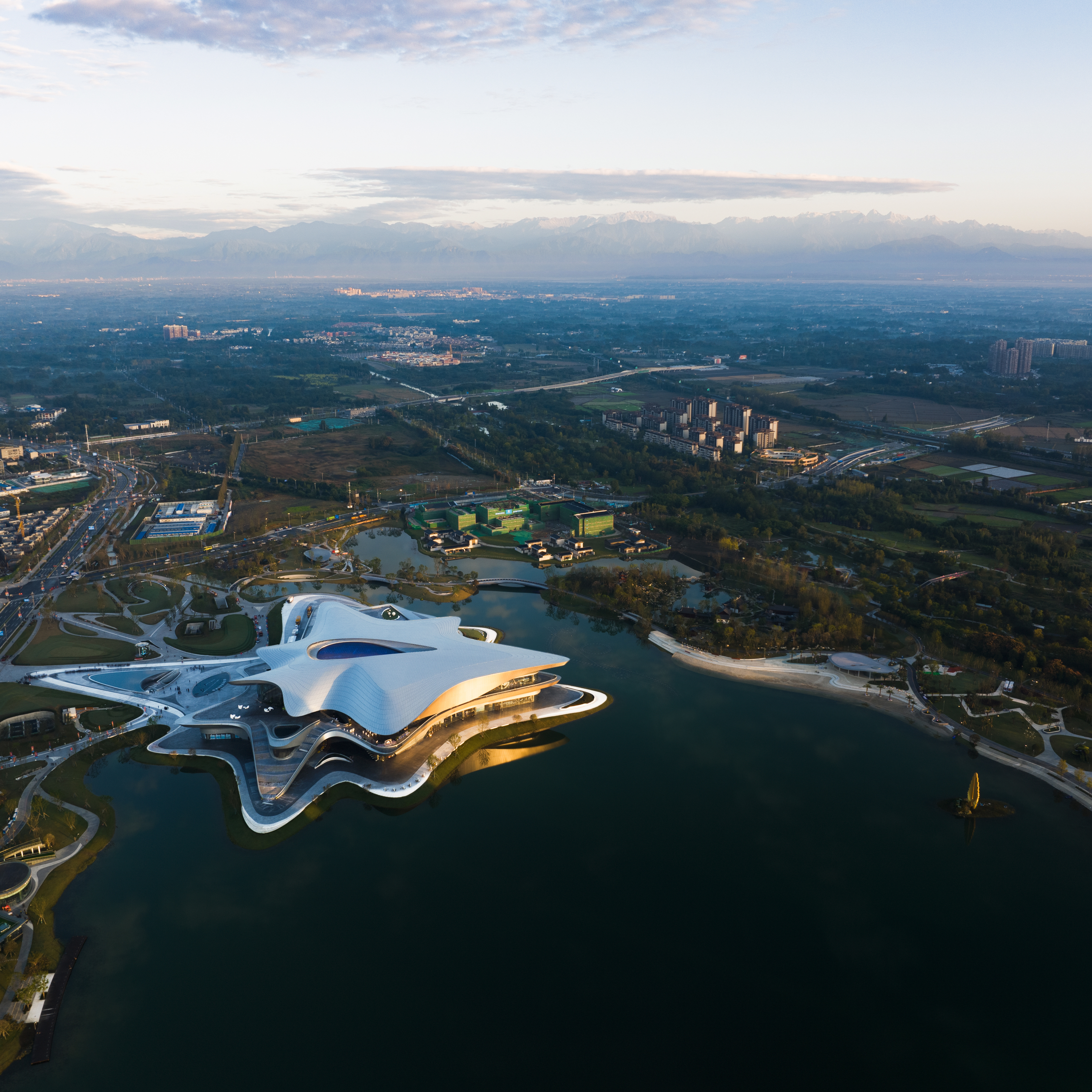
 Another fun fact about Chengdu is that it’s actually China’s leading incubator of science fiction. Showcasing the city’s contribution to the genre’s evolution and popularity, the new Chengdu Science Fiction Museum opened by hosting the World Science Fiction Convention (Worldcon) and Hugo Awards for the first time in China.
Another fun fact about Chengdu is that it’s actually China’s leading incubator of science fiction. Showcasing the city’s contribution to the genre’s evolution and popularity, the new Chengdu Science Fiction Museum opened by hosting the World Science Fiction Convention (Worldcon) and Hugo Awards for the first time in China.
Designed by Zaha Hadid Architects, the building features fluid, futuristic forms that perfectly reflect the spirit of science fiction. Integrating with the natural lakeshore, the museum features interconnected pedestrian routes that weave through indoor and outdoor spaces, linking exhibition galleries, educational facilities, cafes and other amenities.
HDC Design- CHUAN HSI PA TZU
By Design Aesthetics, Chengdu, China
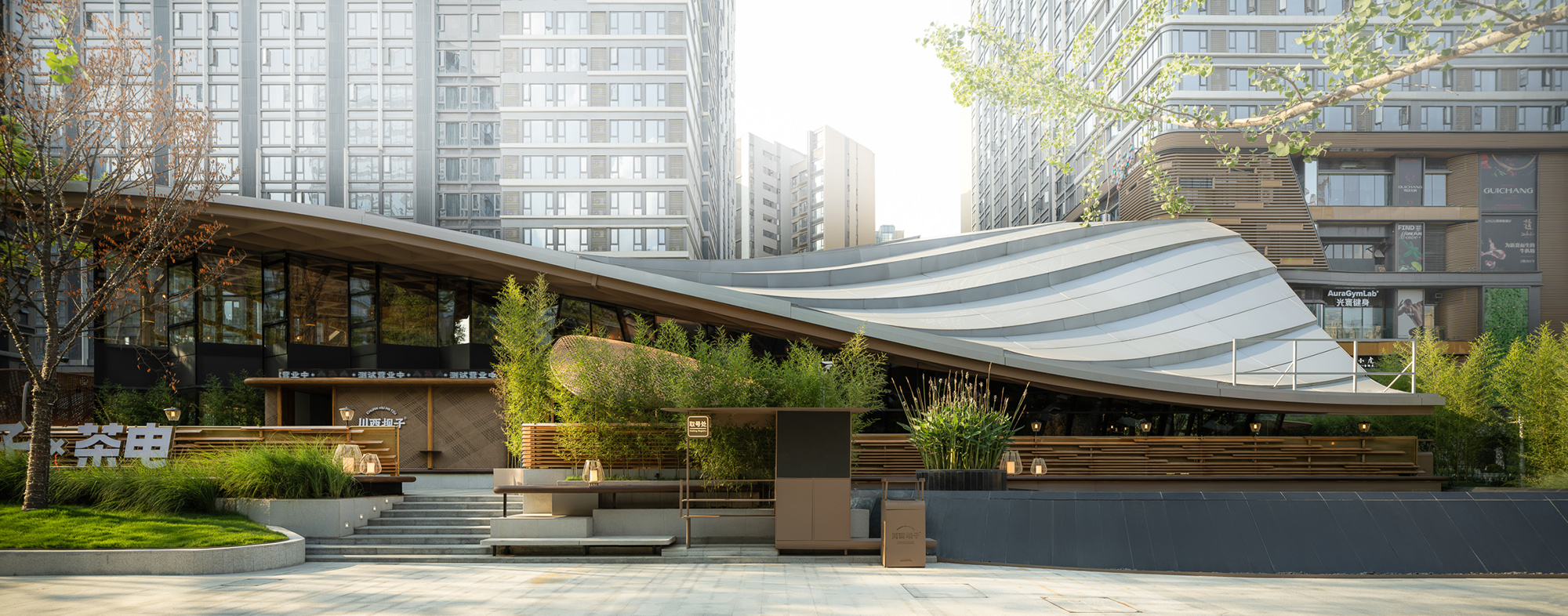
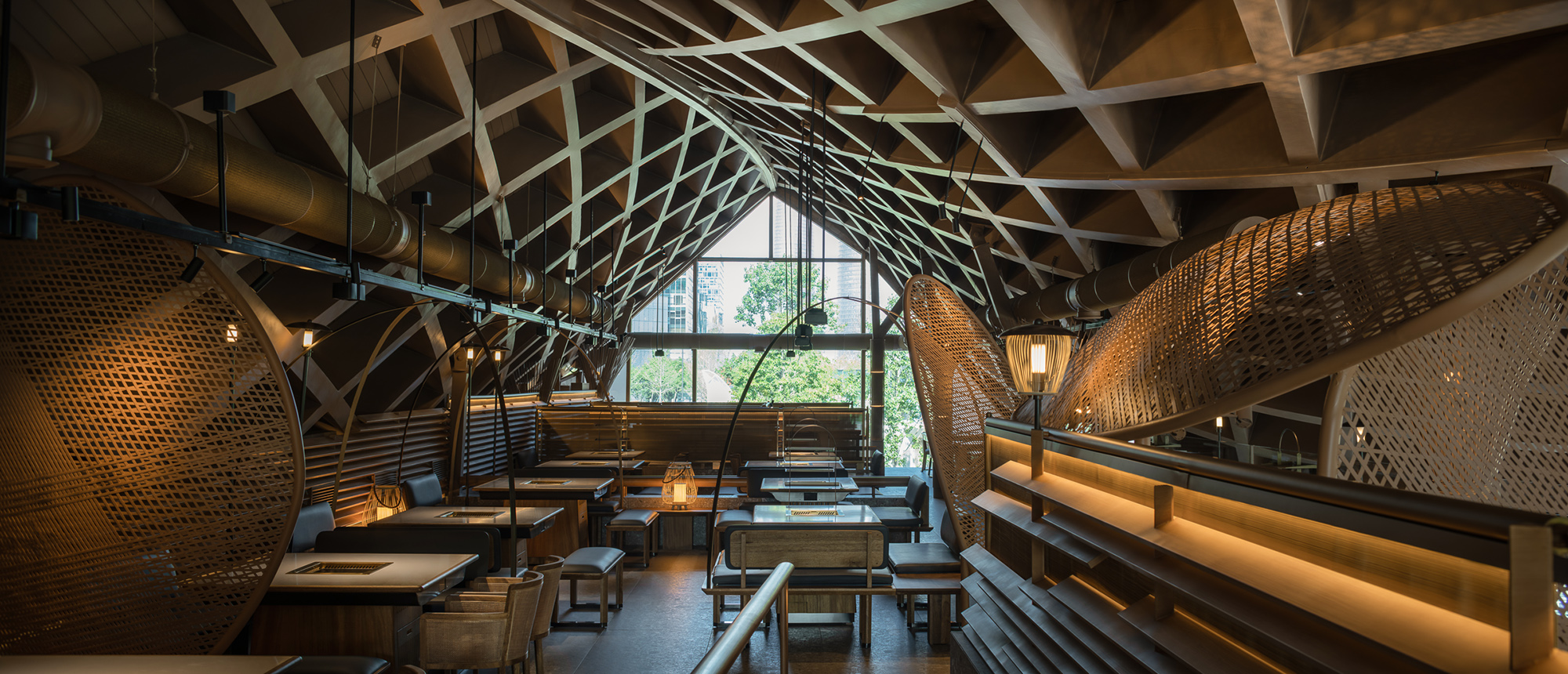 If you want to try Chengdu’s signature traditional food in a uniquely designed space, this is the place to be. The teahouse retains the original slanted roof and incorporates bamboo-woven elements like awnings and screens. The layout creates an uninterrupted connection between the indoor and outdoor spaces, offering an engaging and traditional dining experience.
If you want to try Chengdu’s signature traditional food in a uniquely designed space, this is the place to be. The teahouse retains the original slanted roof and incorporates bamboo-woven elements like awnings and screens. The layout creates an uninterrupted connection between the indoor and outdoor spaces, offering an engaging and traditional dining experience.
Luxelakes Expo Center
By Antoine Predock with Chengdu Wide Horizon Investment Group, Chengdu, China

 Serving as the entry to the Luxe Lake development, this center combines art, theater and dining into one cohesive space. Inspired by Chinese culture and the Sichuan landscape, the design mimics the movement of a dragon, with the structure descending from the hills to meet the lake.
Serving as the entry to the Luxe Lake development, this center combines art, theater and dining into one cohesive space. Inspired by Chinese culture and the Sichuan landscape, the design mimics the movement of a dragon, with the structure descending from the hills to meet the lake.
The building spans from one to nine floors, incorporating galleries, restaurants, meeting rooms and a performance hall with a stunning red sandstone café wall. The exterior materials include low-maintenance bush-hammered concrete, structural glass glazing and locally sourced granite and bronze cladding.
With public pathways, plazas and green roofs extending from the surrounding park, the Luxe Lake Gateway provides an immersive, nature-filled experience that artfully combines modern design with traditional influences.
Sliced Porosity Block
By Steven Holl Architects, Chengdu, China
Jury Winner, 2nd Annual A+Awards, Architecture +Photography & Video
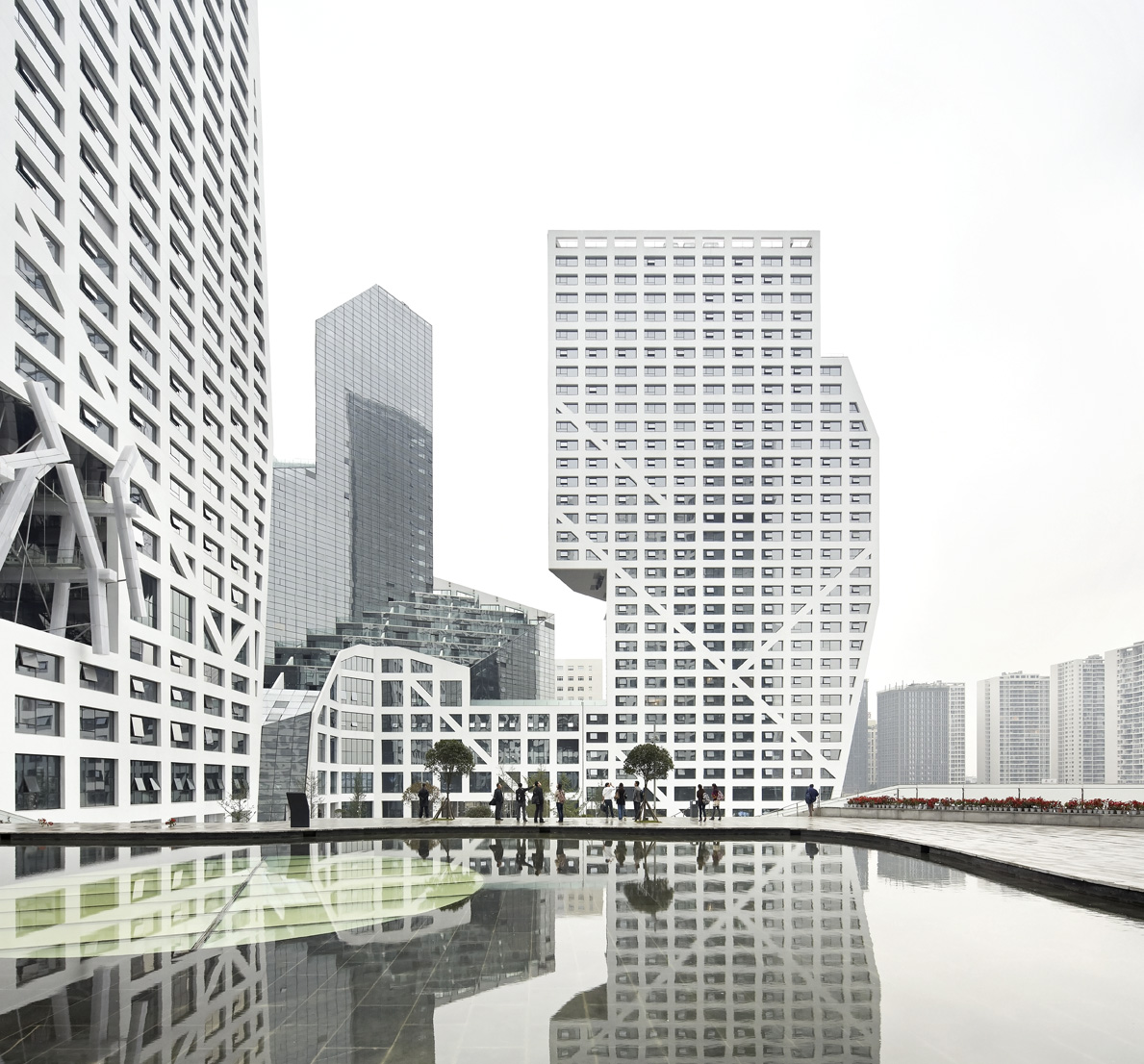
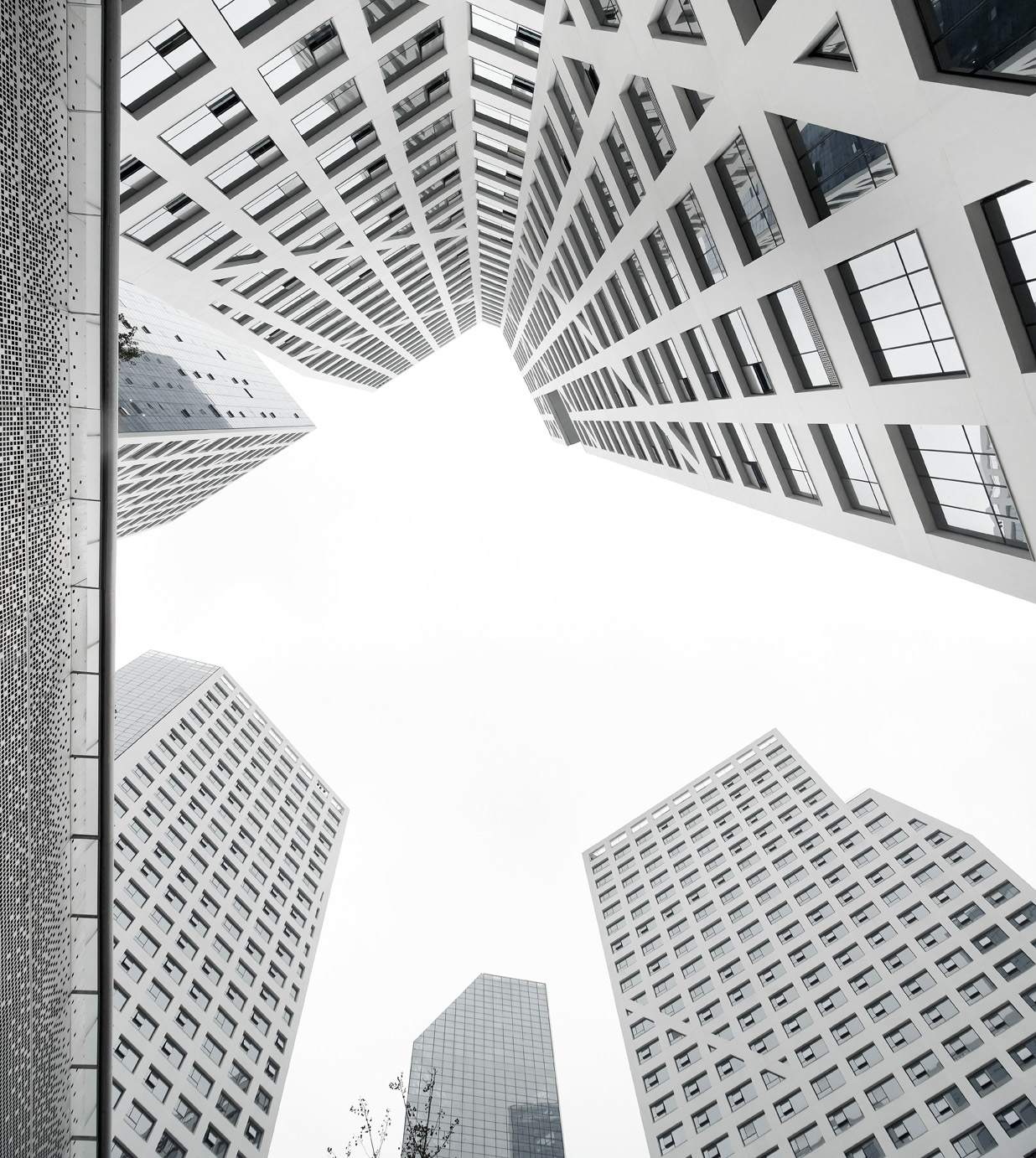 This complex stands out with its sun-sliced geometry, maximizing natural light throughout its structure. The design includes urban terraces, cascading pools and green roofs, creating vibrant public spaces inspired by Du Fu’s poetry. Sustainable elements like geothermal heating and rainwater harvesting make it a forward-thinking landmark in Chengdu.
This complex stands out with its sun-sliced geometry, maximizing natural light throughout its structure. The design includes urban terraces, cascading pools and green roofs, creating vibrant public spaces inspired by Du Fu’s poetry. Sustainable elements like geothermal heating and rainwater harvesting make it a forward-thinking landmark in Chengdu.
Xinshan Community Center and Library
By VARI Design, Chengdu, China
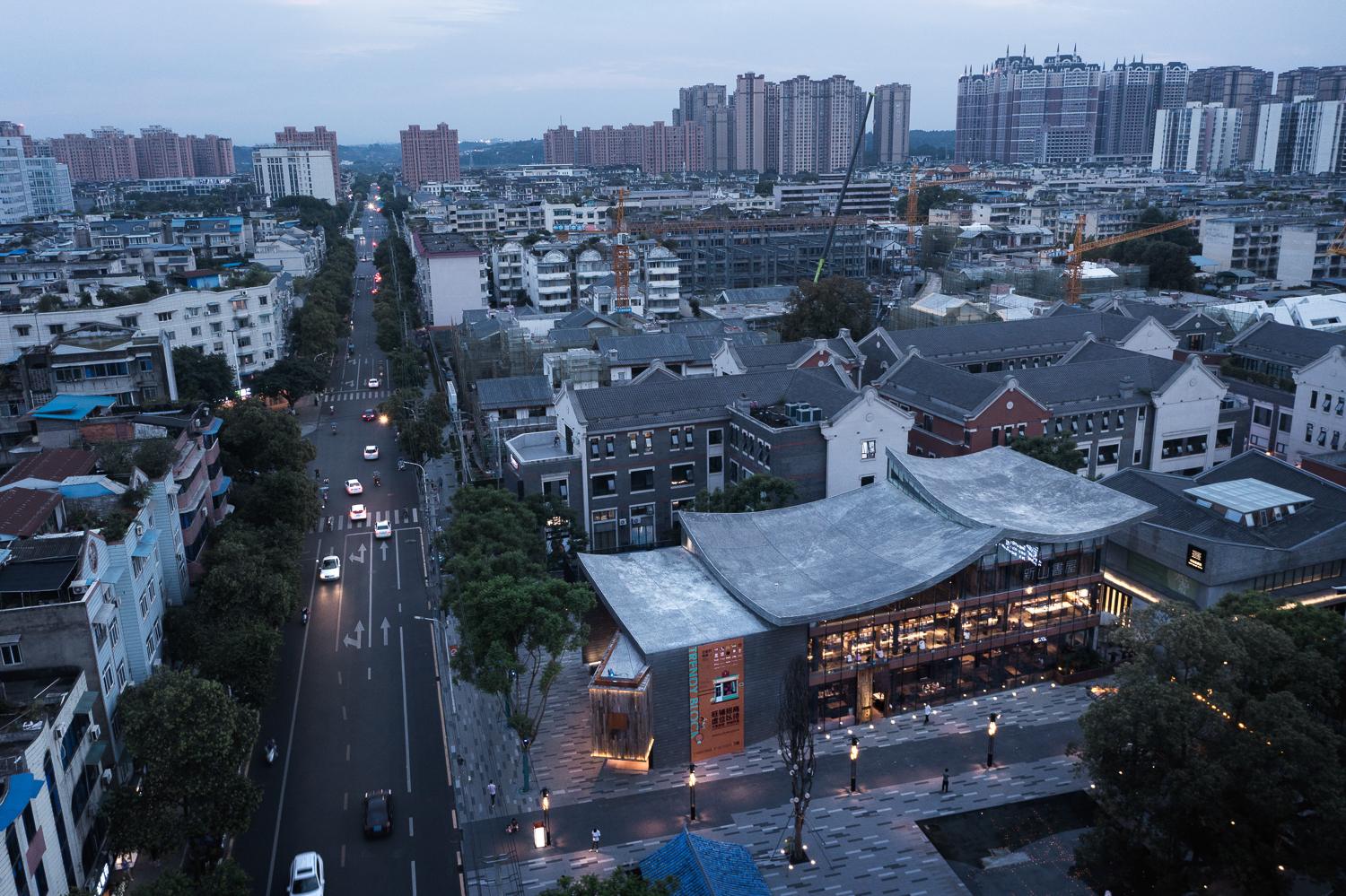
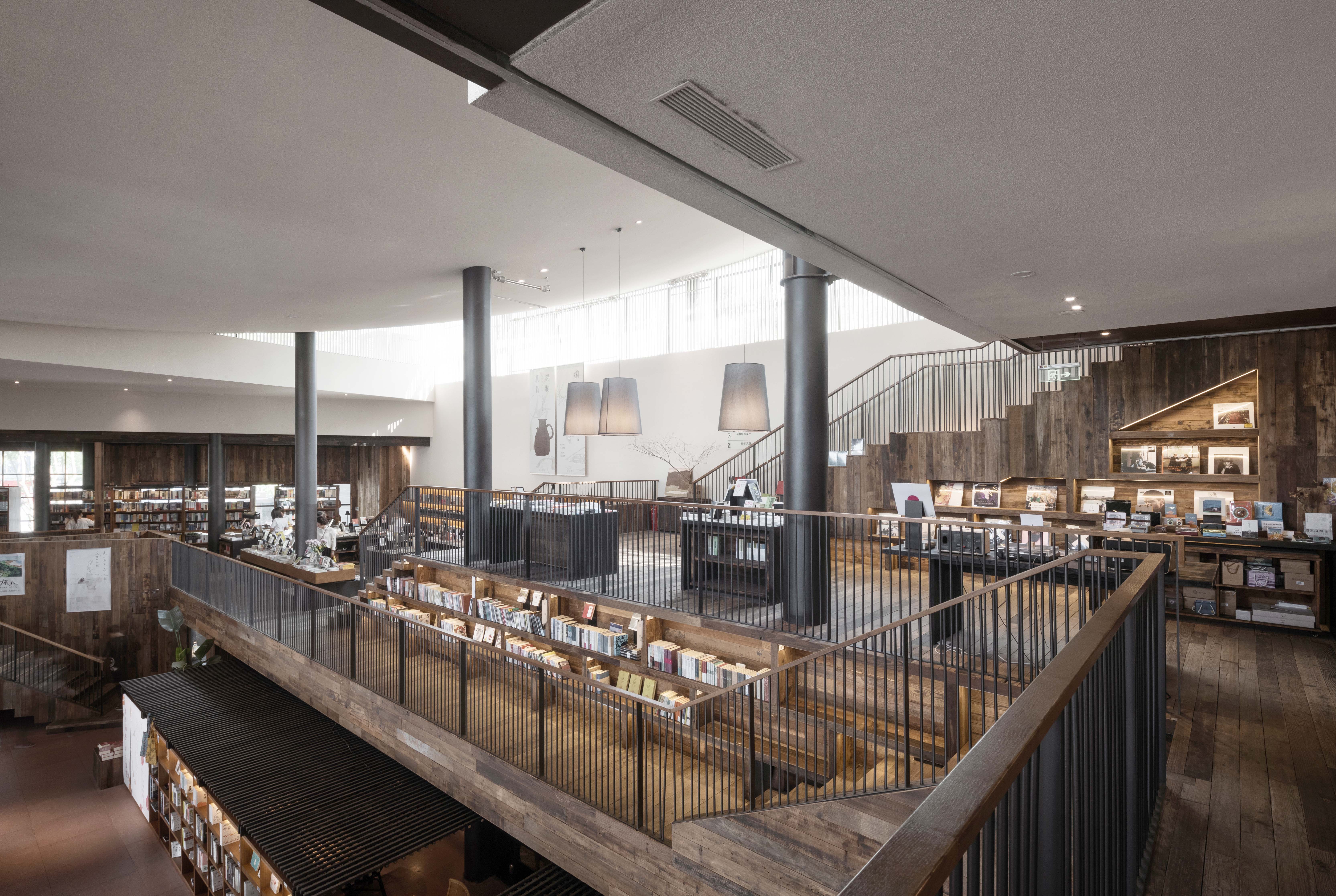 The Xinshan Bookstore is a key part of the historical district’s urban renovation. Featuring a creative design inspired by traditional curvilinear roofs, it does a great job of combining modern and historic aesthetics.
The Xinshan Bookstore is a key part of the historical district’s urban renovation. Featuring a creative design inspired by traditional curvilinear roofs, it does a great job of combining modern and historic aesthetics.
The building’s double-curvature roof is divided into three sections, each housing unique communal spaces. Highlights include an interior amphitheater for gatherings, quiet reading balconies and a flexible coffee and atrium area.
Design-Oriented Day Trips From Chengdu
Shanshui Firewood Garden
By Mix Architecture, Yibin, China
Popular Choice Winner, 11th Annual A+Awards, Sustainable Hospitality Building
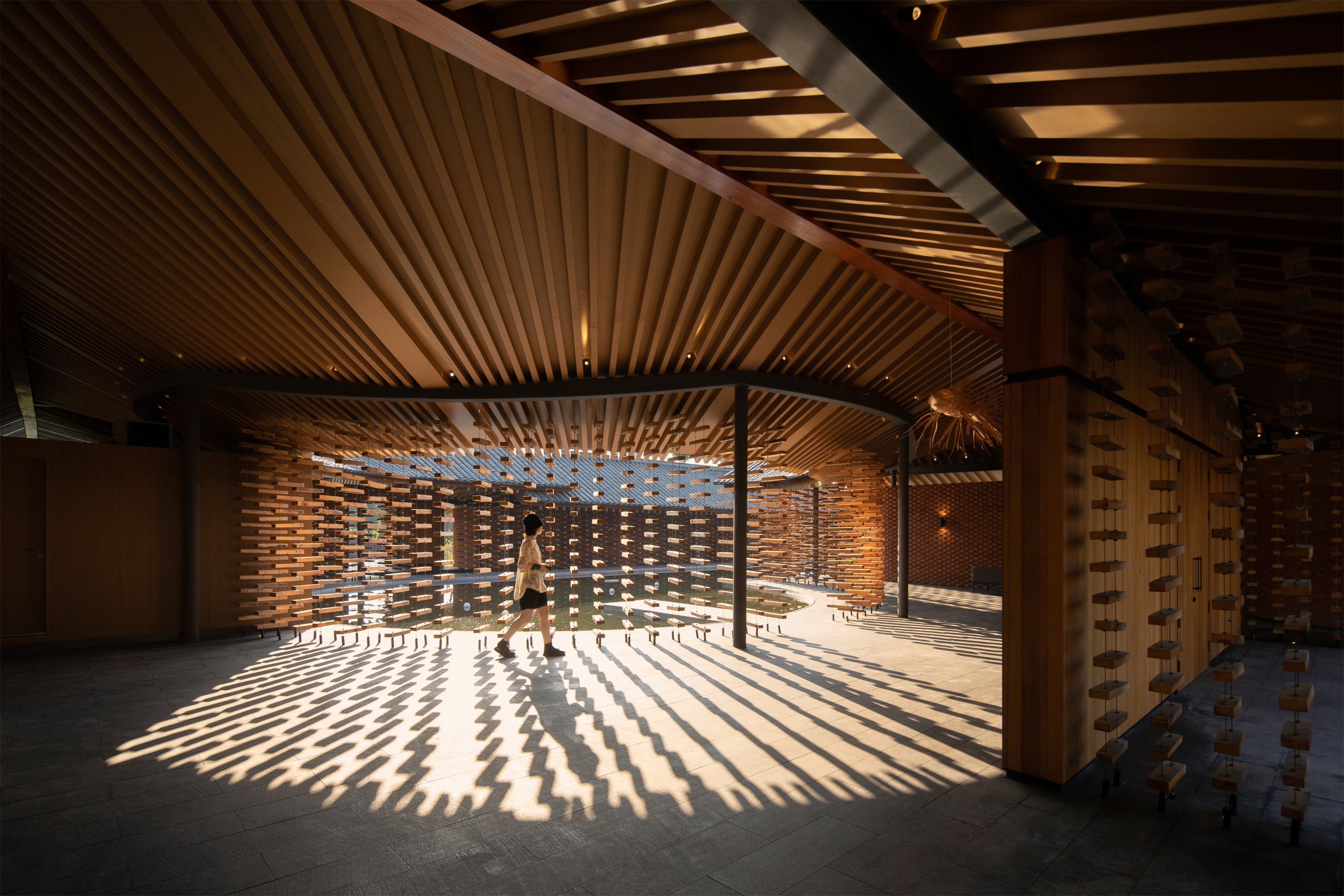 This multifunctional cultural space is located in Anshi Village near Yibin, not too far from Chengdu, making it a perfect day trip destination.
This multifunctional cultural space is located in Anshi Village near Yibin, not too far from Chengdu, making it a perfect day trip destination.
Designed with pierced wood structures and low eaves for ventilation, the project uses durable materials like bamboo weaving, mud walls and red sandstone. The building adopts a cross-style layout, featuring large eaves and an arc-shaped inner courtyard that create a fluid and dynamic space. Prominently featured in the design is firewood, a vital element of rural life, alongside red sandstone and small blue tiles, resulting in a rich, textured aesthetic.
Qujiang Museum of Fine Arts Extension
By Neri&Hu Design and Research Office, Xi’An, China
Popular Choice Winner, 12th Annual A+Awards, Museum

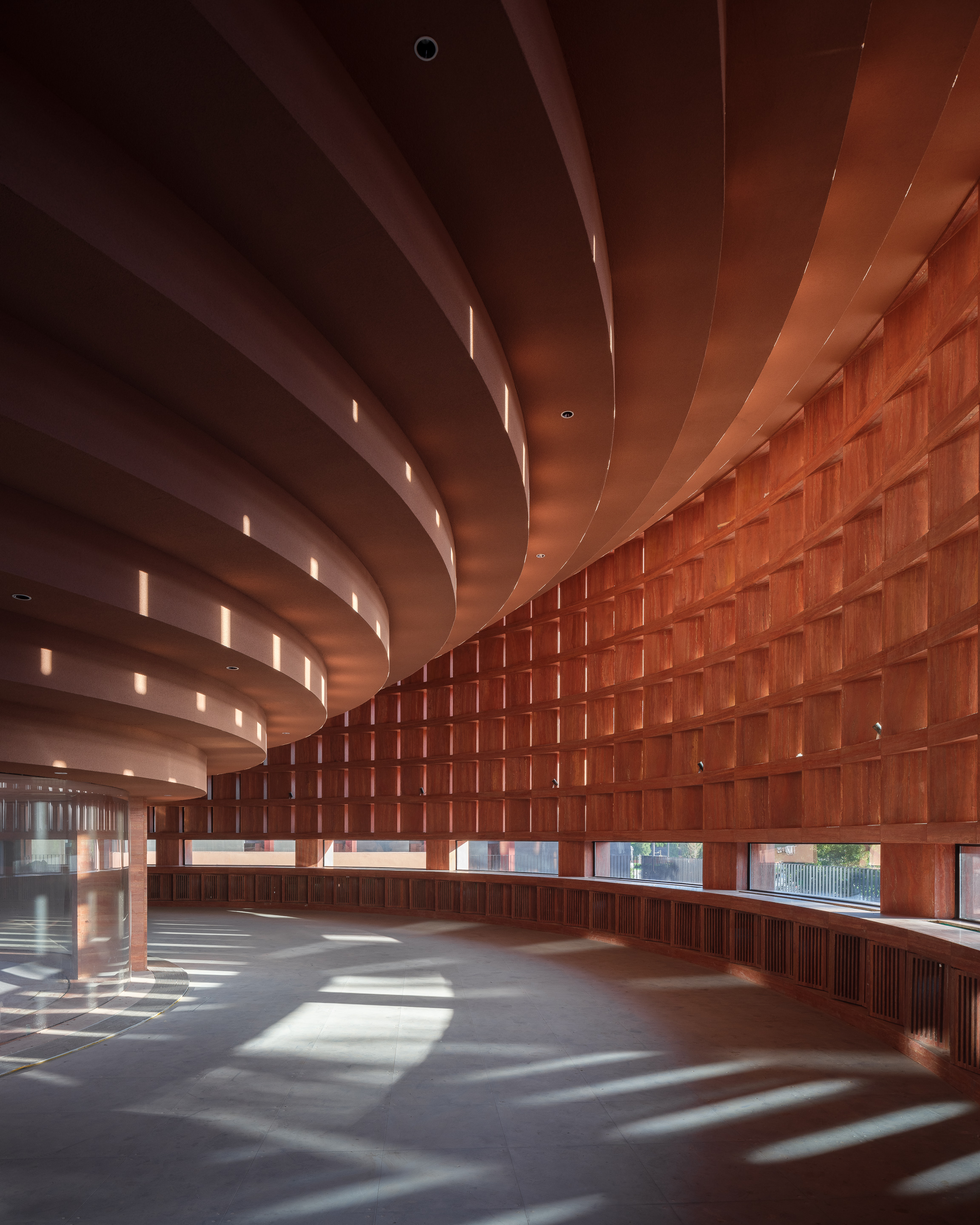 If you find yourself on a day trip from Chengdu to Xi’an, don’t miss the Qujiang Museum of Fine Arts. Neri&Hu’s latest design is envisioned as a new landmark for the city, standing out with its monolithic urban monument concept and subterranean layout.
If you find yourself on a day trip from Chengdu to Xi’an, don’t miss the Qujiang Museum of Fine Arts. Neri&Hu’s latest design is envisioned as a new landmark for the city, standing out with its monolithic urban monument concept and subterranean layout.
The building uses cast-in-place concrete for the base and metal cladding with louvres for the facade, bringing light into the interior spaces. The design includes a series of escalators leading to the underground museum, creating a dramatic entry experience.
The latest edition of “Architizer: The World’s Best Architecture” — a stunning, hardbound book celebrating the most inspiring contemporary architecture from around the globe — is now shipping! Secure your copy today.
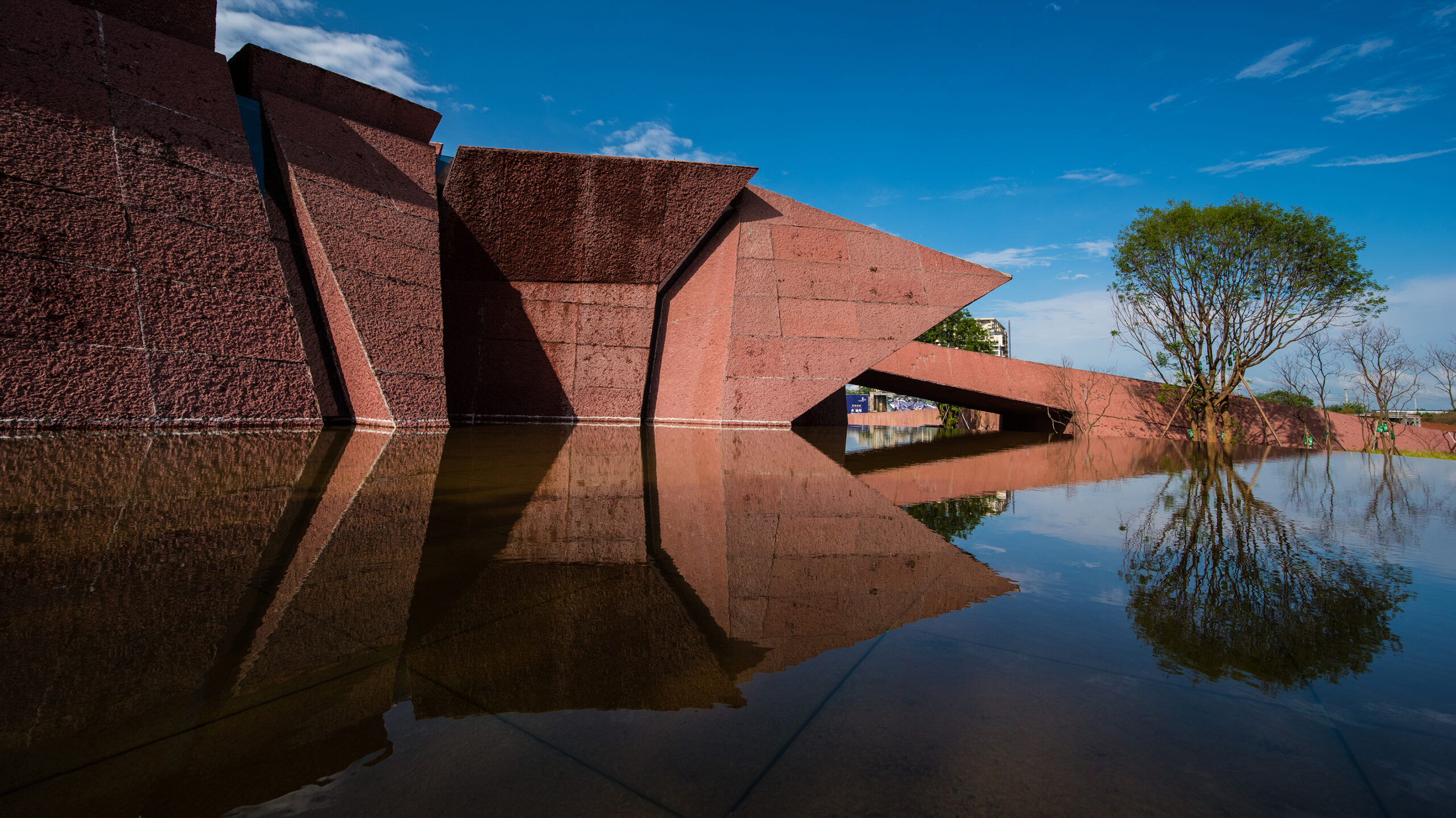
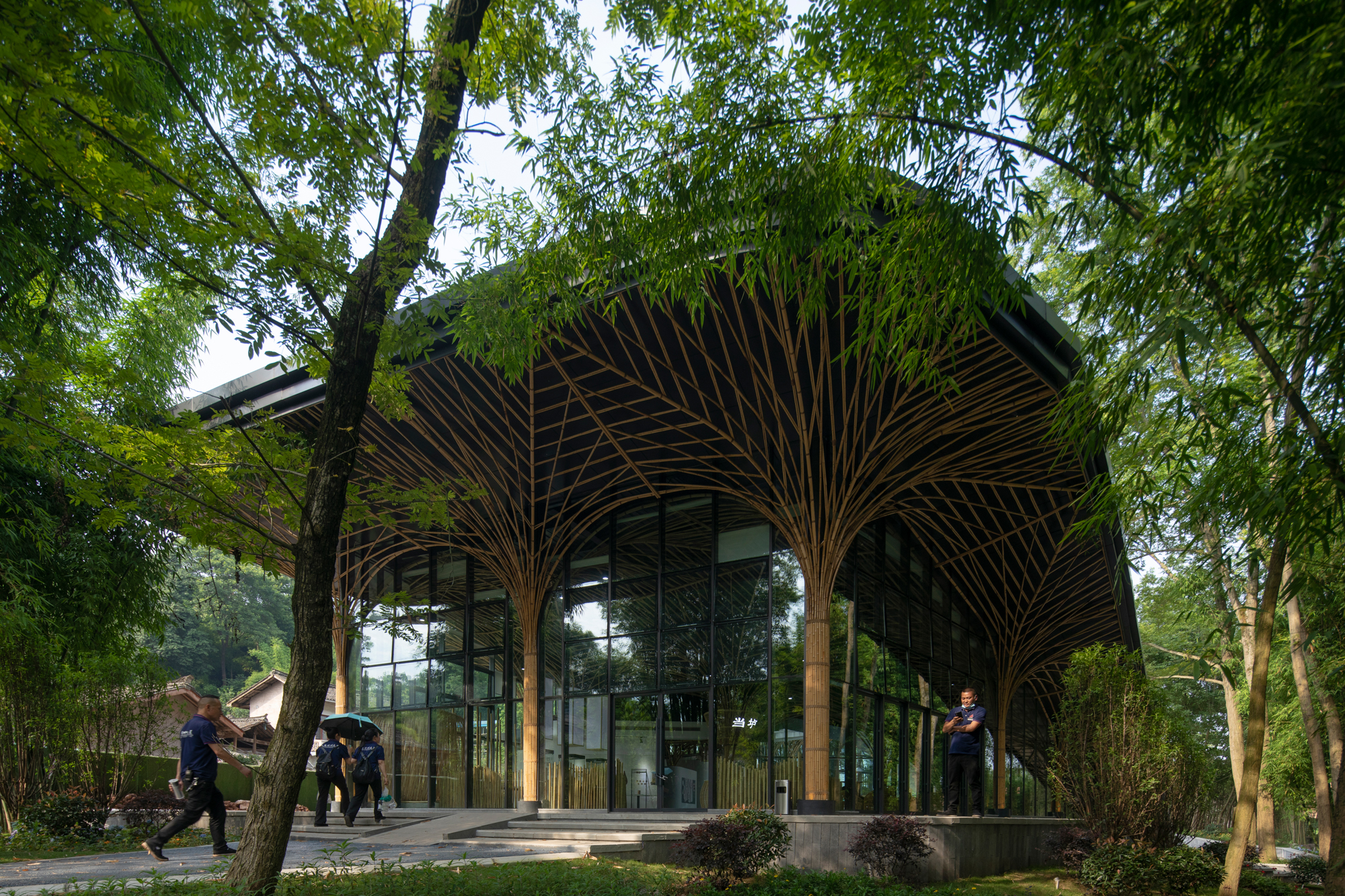
 Sliced Porosity Block
Sliced Porosity Block 